

Tongue Tower
Issue : 12 Updated : 18th April 2023
Construction had begun on all three Naval Forts in early 1942
The Third designated U3 was named HMS Tongue Fort on 3rd June
The tow to the grounding site at Tongue Sands commenced at 05.20 am on Saturday 27th June 1942

U3 arrives at the site 5.5 nautical (6.32) miles off Margate at 16.15 pm (27th June 1942)
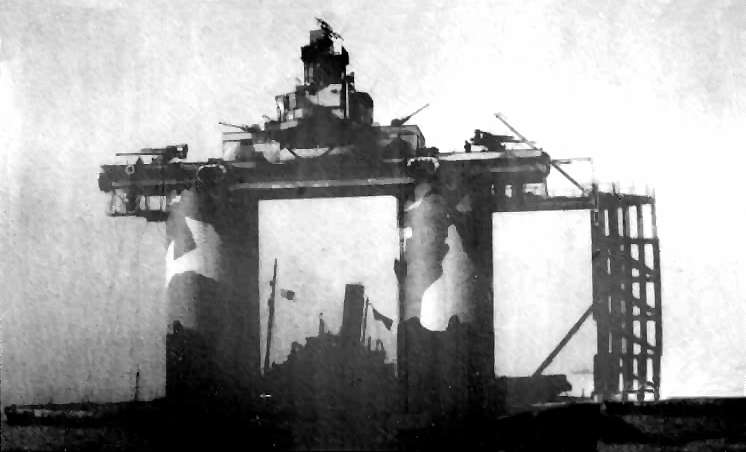
Final preparations prior to grounding (sinking) (27th June 1942)

08.35 pm sea cocks open the Fort sinks to the prepared sea bed (27th June 1942)

By 08.52 pm the operation was complete with the Fort settled in position (27th June 1942)
Tongue was to be the penultimate Naval Fort it saw action for 3 years until decommissioned in 1945 due to the Forts instability caused by poor grounding and severe under-scouring
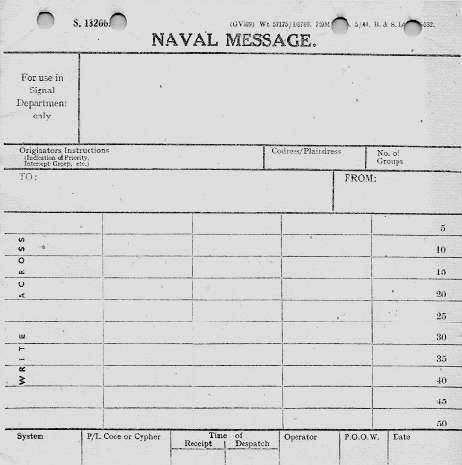
Original WWII Naval Message Pad retrieved from Tongue
The Tower was left under care & maintenance but hastily abandoned after the Fort shook violently with parts falling into the sea in December 1947
The crew returned until 1949 when the Fort broke its back - See Fort Facts

Tongue Tower pictured in the (Early 1950's)
Distortion of the Southern leg apparent

Alternative WWII Naval Message Pad retrieved from Tongue
Following photographs 8 - 11 of Tongue Fort circa 1960

View East even then the leg distortion apparent (1960)
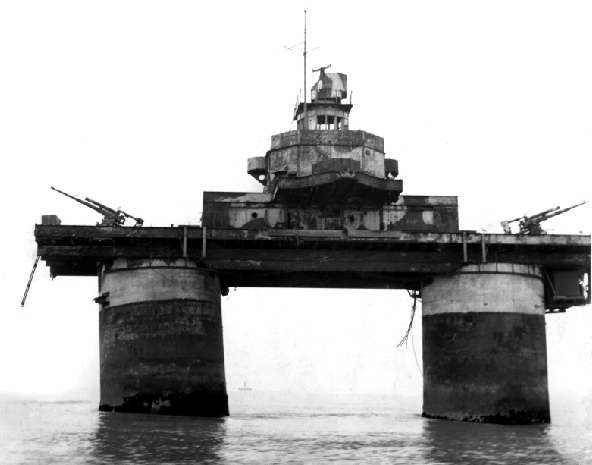
Looking West, note the Tower still boasted it's observation turret & radar house (1960)
Tongue Light Vessel just visible through the haze (enhanced)

Looking North at South Leg, remarkable the Fort would stand 36 more years (1960)

Under the distorted South Leg (1960)
Photographs 6 - 9 By Ted Ingham a former Merchant Naval Officer in his career had often passed the Thames Estuary Forts
These pictures are Tongue Fort circa 1960 from GSNC* MV 'Royal Sovereign' on a special pleasure trip to Tongue Fort & Light Ship
* General Steam Navigation Company
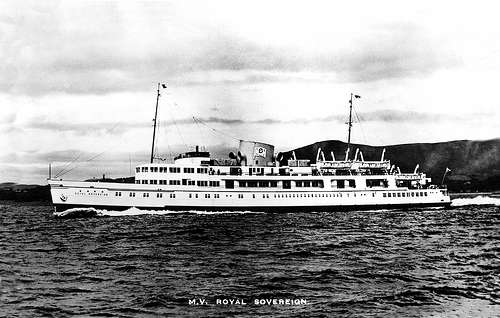
The MV Royal Sovereign (Postcard)
Launched in 1948 she normally sailed along the North Kent coast to North Foreland from Tower Pier to Southend, Sheerness, Margate & Ramsgate
Sister ship MV Queen of the Channel can be viewed in Old Ships
She would follow a similar pattern but would call at Herne Bay, Margate & Deal piers before setting off for Calais
--------------------------------------
In the summer of 1966 the Fort was boarded by a small crew led by Fort Captain Dick Palmer from Radio Essex
Despite the Tower's run down and dangerous state, Roy Bates talked about starting Radio Kent from Tongue
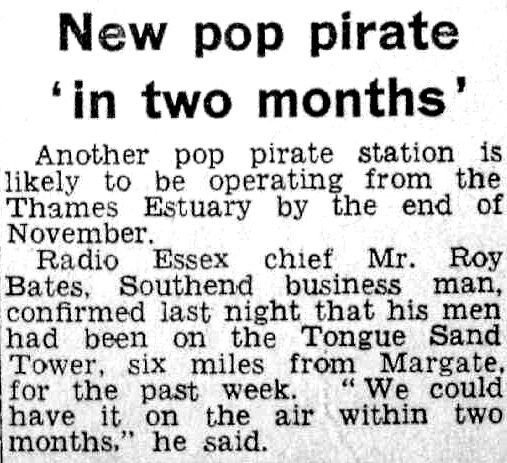

Original Press Cuttings (5th September 1966)
You can hear recordings in our documentary the Radio Essex Story between Knock John - Tongue about the preparations and pending arrival of a transmitter from America
An radio anorak boat visited, circled the Fort then came alongside. Disheveled and dirty sporting a pair of leatherette shorts Tony Mandell clambered down the Dolphin to sign autographs
With funds depleted the idea was dropped; Dick, Tony and Dave Belasco set about stripping electrical cables and burning off the insulation for the copper and lead to buy diesel, food, and perhaps pay some long due salaries!

Original Press Cutting (5th September 1966)
On a Sunday afternoon attracted by the smoke, an air-sea rescue helicopter was dispatched from Manston. A line lowered in readiness for boarding was grabbed by Dave Belesco, the static discharge throwing him across the Fort deck
The Helicopter backed off returning to Manston, soon after the RNLI Lifeboat appeared, asked who they were. A quick thinking Dick Palmer shouted 'we're a radio station' even though by now just 'totting' for scrap
* A little later Roy Bates raided the Army Forts taking away the crane jib lanterns, they appeared in a Southend Antique (Junk Shop) window selling for an unknown amount
The RNLI shouted 'Which radio station' Dick replied 'Radio Albatross'
That evening on Radio Essex, Guy Hamilton said hello to all the guys on Tongue especially Albert Ross!
The official visit had apparently prompted questions in the House of Commons

Daily Telegraph (5th September 1966)
Roy made the most of the fiasco releasing a 'story' to the Media
Various useful parts including the ammunition hoist motor, which was missing on Knock John, benches plus odds and ends were removed and taken to Knock John, some items survive & are still on Roughs Fort (Sealand)
The telephone exchange had already been removed by others
* The hoist with brake mechanism was reconditioned and fitted on Knock John, until then they'd tried running a pulley from the generator drive shaft by physically throwing a drive belt onto the moving shaft
The replacement motor Radio Essex an effective crane hoist for taking on supplies
See Sealand : Fort Fax for more detail

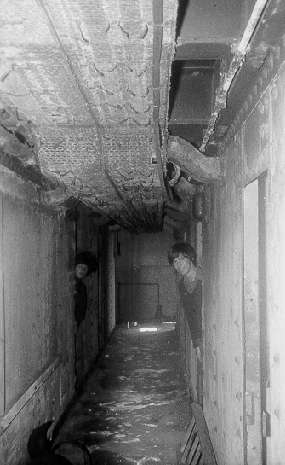
| Tongue
Fort Looking South from Control Deck (1969) |
Tongue
Fort Deck Bridge 'Row' looking South (1969) |

Mike Bass, Roger & Terry Vacani below (1969)



Thanet Gazette (1st May 1970)
The National Institute of Oceanography Tongue Wave Survey from the Tongue Light Vessel by August 1971

Laboratory samples taken from a report on Tongue Fort (1977)

Tongue Fort from the air (1980)
The easiest way to distinguish Tongue from Knock John is that Knock John's Northern 3.7" Gun pointed skywards, also note remnants top of the Control Deck which had been cut away at Knock John but remnants remain on Tongue
More photographs from Ted Ingham, these taken from a Wessex Air Sea Rescue helicopter from 22 Squadron RAF Manston in 1981

Tongue Fort from the air (1981)

Close up deck-bridge view (1981)
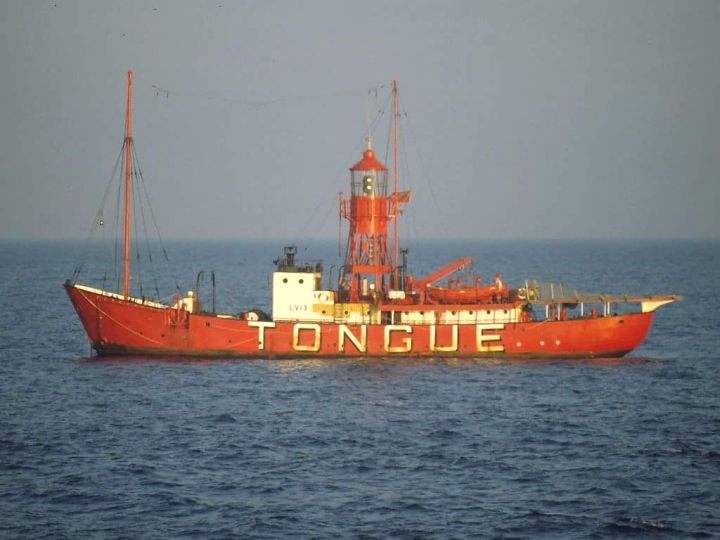
Tongue Light Vessel (LV13) (1984)
The last manned Tongue lightship LV13 was built by Philip & Son Limited Dartmouth Yard in 1952, decommissioned in 1991 & towed to Hamburg where she was converted into a Bar Restaurant with accommodation

Last of the Tongue Light Vessels the modified Automatic LV1 pictured (1985)
More pictures of the LV1 - Mary Mouse 2 in Eurosiege
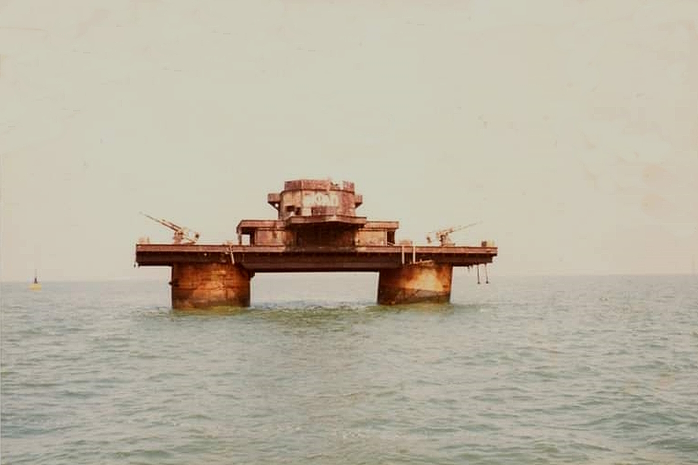
Tongue Tower (1991)

Tongue Tower (1991)

Tongue Tower (1991)
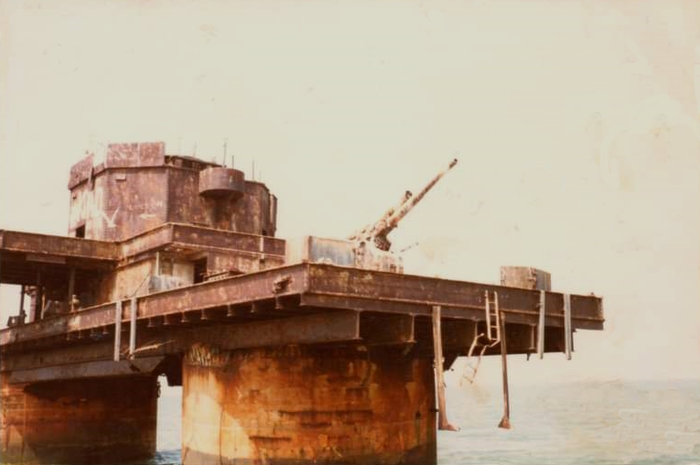
Tongue Tower (1991)
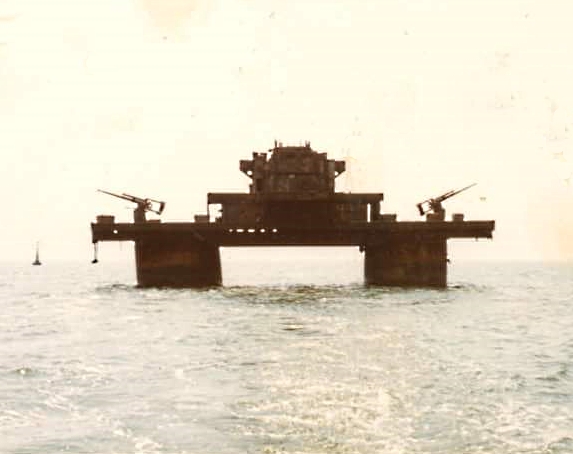
Tongue Tower (1991)

Tongue Tower (May 1992)
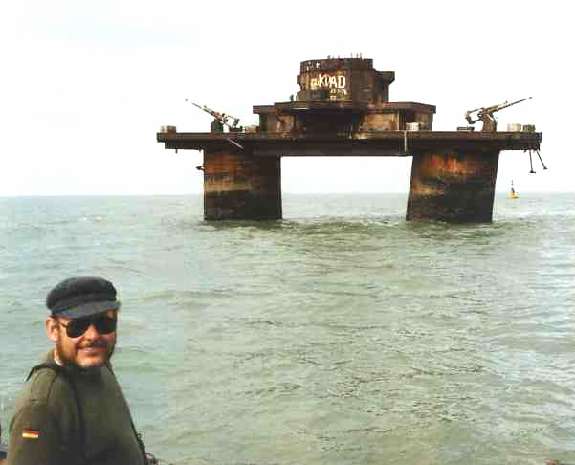
Tongue Fort (a) (June 1992)
Following Photographs of Tongue Fort (a)-(i) shortly before the 3.7" guns were removed in June 1992

Tongue Fort (b) (June 1992)

Tongue Fort (c) (June 1992)
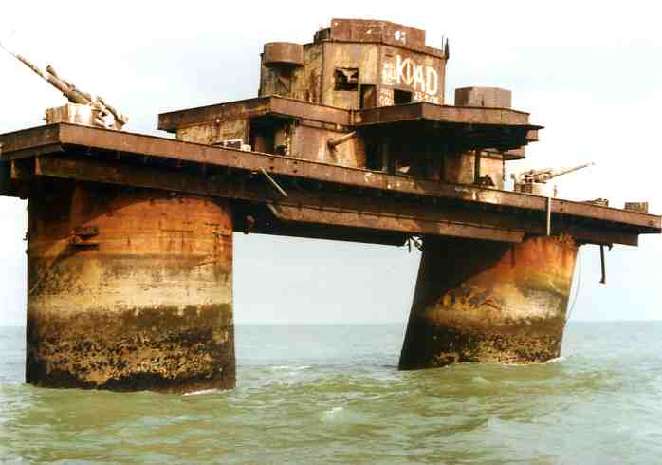
Tongue Fort (d) (June 1992)
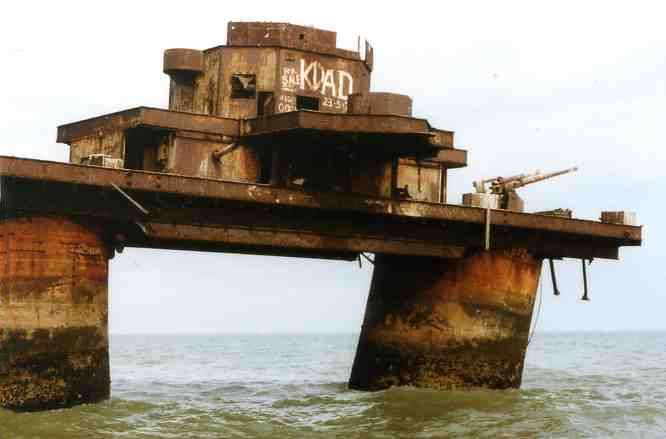
Tongue Fort (e) (June 1992)

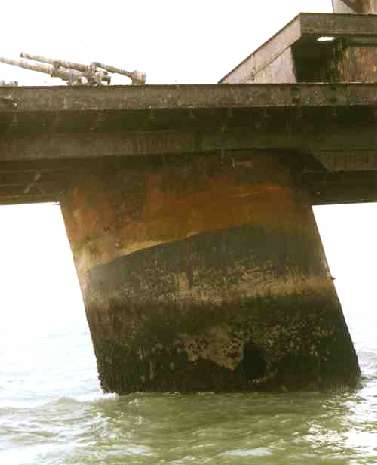
| Tongue
Fort (f) (June 1992) |
Tongue
Fort (g) (June 1992) |

Tongue Fort (h) (June 1992)
)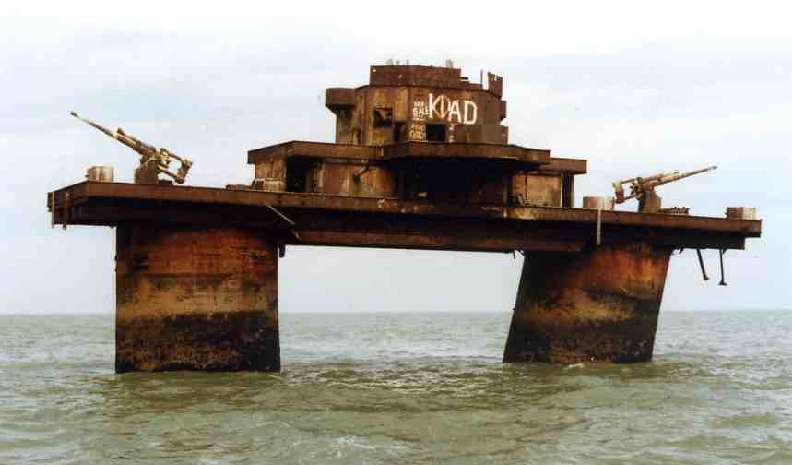
Tongue Fort (i) (June 1992)
In the early 1990's Orkney resident Ray Hughes originally from Kent made inquiries about having the 3.7" Guns removed from Knock John & Tongue Forts
The British Grand Fleet were based in Scapa Flow in WWI & II the scene of the tragic losses in both conflicts, despite fierce Naval battles none of the armaments survived
Involved with the Lyness Museum Ray's undertaking was to have the Big Guns exhibited in the Orkney Islands
Through protracted negotiation Ray persuaded the Admiral of the Fleet to take off the Guns as a special exercise
Not undertaken lightly the estimated hourly cost of a Chinook at the time being around £20k
Pictures below by RAF Manston from June 1992

Tongue about to have it's 'teeth' pulled (June 1992)
The Royal Engineers landed a team from a Sea-King Helicopter to burn away the multitude of securing bolts and fitted
strops for lifting the heavy guns

Royal Engineers airlifted onto Tongue Tower (June 1992)

Royal Engineers set about preparing for the lift (June 1992)

Royal Engineer acetylene cutting the 3.7" Gun fixing bolts (June 1992)

Royal Engineer acetylene cutting the 3.7" Gun fixing bolts (June 1992)


| Chinook
Crew observing (June
1992) |
The
last 3.7" Gun leaves Tongue Fort (June
1992) |
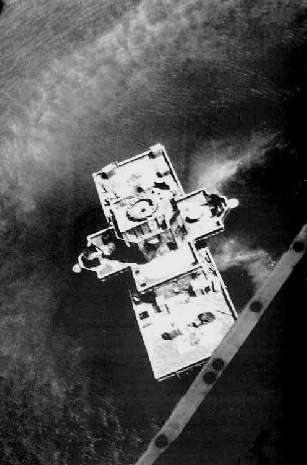

| Hovering
over Tongue (June
1992) |
Tongue
now depleted of armaments(June
1992) |
An RAF Chinook using Manston as operational HQ pulled the guns taking them back to Manston on the proviso they were removed within 48 hours
Ex-Merchant Naval Officer, Master Mariner, local historian John Guy intervened making a case to keep one 3.7" gun in Kent
This was accomplished with a home being found for a Tongue Gun at Fort Gardens in Gravesend, Kent close to where the Forts had been built, fitted and armed
The other three guns we're transported to the Orkney Islands

Tongue (j) (July 1992)
Photographs (j) - (t) of Tongue Fort soon after loosing her 3.7" guns (July 1992)

Tongue Fort (k) (July 1992)
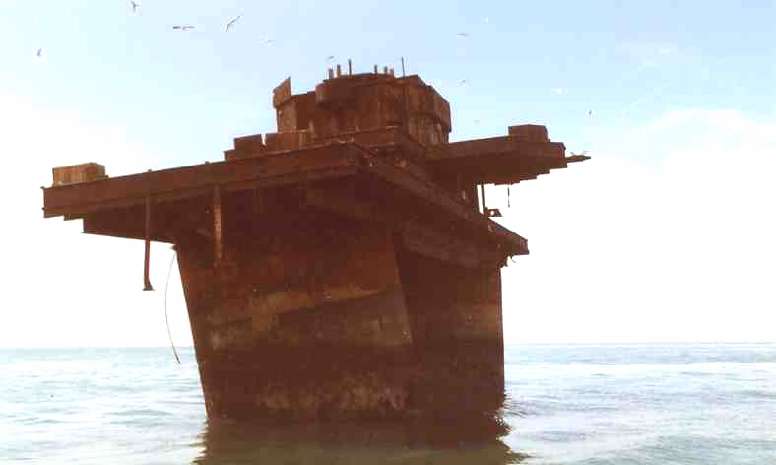
Tongue Fort (l) (July 1992)
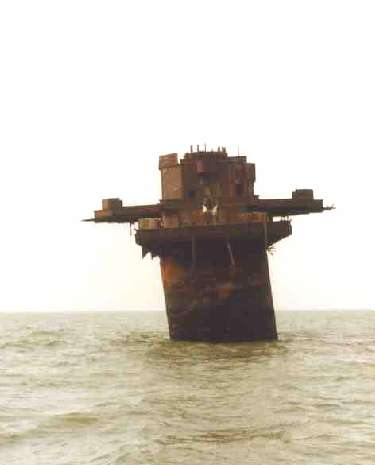

| Tongue
Fort (m) (July 1992) |
Tongue
Fort (n) (July 1992) |


| Barry
& Clive Tongue Fort (o) (July 1992) |
Tongue
Fort (p) (July 1992) |

Tongue Fort (q) (July 1992)

Tongue Fort (r) (July 1992)

Tongue Fort (s) (July 1992)

Tongue Fort (t) (July 1992)
Sailing close to the Fort throughout the mid 1990's it was apparent that the leg distortion was becoming very much more pronounced
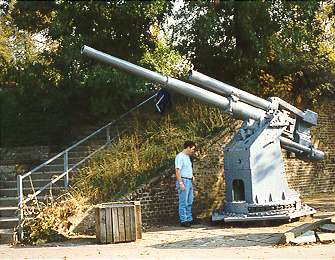
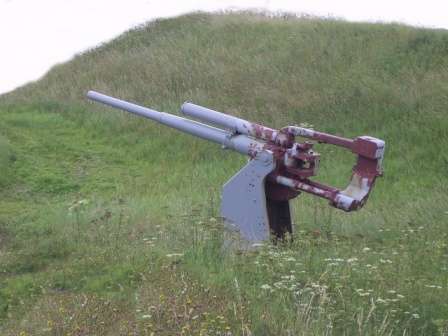
| The
only remaining Sea Fort 3.7" Gun in Fort Gardens, Gravesend, Kent |
Ex-Thames
Naval Fort 3.7" Gun at Lyness Museum, Orkney |

Refurbished 3.7" Ex-Naval Fort Gun in Orkney

Thames Naval Fort 3.7 Heavy-Anti-Aircraft Gun at the Scapa Flow Museum & Visitor Centre at Lyness Naval Base

Map showing the Scapa Flow Visitor Centre Centre & Museum
A few minutes walk from the Lyness Ferry Terminal the museum is at the old Naval Lyness Fuel Pumping Station (HMS Proserpine) illustrates the importance of Scapa Flow in WWI & II Scapa Flow Visitor Centre & Museum, Lyness, Hoy, Orkney, KW16 3NU (01856 791300)
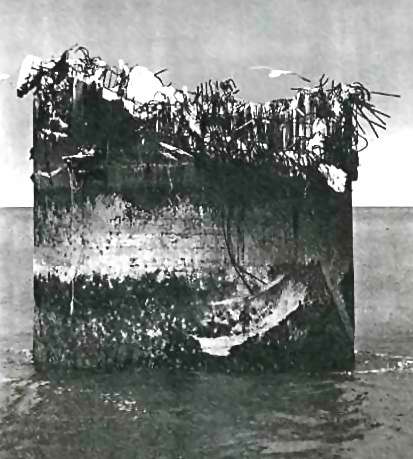
Tongue Tower North Leg Stump (March 1996)
Finally, during a violent storm overnight on 21st & 22nd February 1996, the whole Fort structure toppled disappearing into a huge hole, all that remains is a single 18 foot stump of the Southern Leg
The Southern Leg Stump of Tongue Tower from the air (1996)
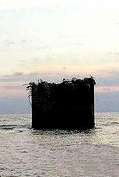
Tongue Towers Leg Stump (1906)
Phil Fishing off Tongue Tower Leg Stump (July 2021)
01/03/11 - The Tongue Sands photos are awesome! Chris C&E
Computer Services
With grateful thanks to Ted Ingham, John Guy, Ray Hughes, Terry Vacani Binocular & Cine Collectors and Captain Graham for their help in producing this feature
Includes original cuttings from the late Maurice Gething archive (Director Radio 390)
For a comprehensive guide to all the Sea Forts go to Fort Fax